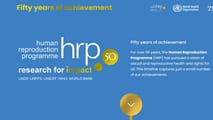Pakistan: Undemocratic Forces Strengthened by Pakistani Government’s Sluggish Response to Flood Devastation
By Asif Aqeel, August 17, 2010
Asif Aqeel is the Executive Director of European Center for Law and Justice’s (ECLJ) office in Lahore, Pakistan. Following is the article by Asif on the recent floods in Pakistan and the Pakistani Government’s response to protect the Pakistani citizens.
Pakistan has recently been hit by the worst episode of flooding in the country’s sixty-three-year history. Unfortunately, the painfully slow response from the democratically-elected government has brought a bad name to democracy, exposing deficiencies in planning and the callousness of politicians towards flood victims. In the early days of flooding, no politician, especially from the incumbent party, was seen in the devastated areas and victims complained that the government was not present anywhere to help them.
With a population of 170 million, Pakistan is one of the fastest growing nations in the world. However, despite the fact that sixty percent of Pakistan’s population is engaged in the agricultural industry, there is still not enough food for the entire nation.. Sugar and wheat are often imported simply because water is scarce. The main reason is the country’s inability to store the Indus River’s water that descends after glaciers on the Himalayas melt during the summer. Pakistan’s inability to store water has also caused power outages because electricity is mainly generated through hydropower. Since 2007, the country’s economy has suffered from power outages ranging from six to eighteen hours at a time.
This catastrophic flooding, water shortage, and electricity shortfall could have been avoided if Pakistan had built proposed dams on the Indus River.[i] Construction of a dam in the Punjab province at Kalabagh has been under consideration for the last four decades, but landlords in the southern provinces of Punjab and Sindh have vehemently opposed it, saying that it would grant even more control to the already-rich Central Punjab province. These petty politics have contributed to the devastating floods, which have affected one-tenth of the population.
All five provinces of Pakistan, Azad Jammu, and Kashmir have been hit by these floods, which have affected fourteen million people and destroyed 895,200 houses.[ii] Although the official number of the people killed in the floods is around 1,600, the number is expected to rise dramatically as the waters recede and people report their missing loved ones. The floods have severely affected the agricultural industry, Pakistan’s biggest industry, by destroying an estimated 1.7 million acres of farmland.[iii] World Bank President Robert Zoellick estimates that the floods have destroyed crops worth around $1 billion.[iv] United Nations Secretary General Ki Moon claimed he has never before seen anything like the catastrophe in Pakistan.[v] Just to cope with the devastation, th[vi]e United Nations estimates that Pakistan will need billions of dollars, which will “further strain[] a country already dependent on foreign aid to prop up its economy and back its war against Islamist militants.”[vii]
Moreover, deforestation has contributed to making these floods worse. Construction workers have been removing sand from the banks of the Indus river. Until last year, when the Taliban was removed from the Swat valley, it had sold so many acres of forest wood to fuel its terrorist operations that a government official said that “the losses suffered by forests in the last one year [are] more than the losses of the last two decades.”[viii] As a result, flood water has easily spread through the Swat valley and has caused several heavy mudslides, burying dozens of victims.
Democracy in Pakistan has only been in existence since 2008, following a nine-year lapse of military rule, and the incumbent government’s careless response may be detrimental to Pakistan’s frail democracy. Not only has the government been accused of a slow response, but influential landlords and government parliamentarians have been accused of diverting water from populated areas in order to save their crops. For example, Federal Sports Minister Ejaz Jakharani tried to divert flood water to Jaffarabad and Dera Allah Yar by breaching the Jamali bypass.[ix] Federal Labor Minister Khursheed Shah and the Sindh Chief Minister Syed Qaim Ali Shah struggled over whether the Sukkur Barrage should be breached to divert flood waters to the plains or be allowed to submerge Sukkur and Hyderabad.
The government’s poor response has even invited military involvement. The army had to get involved over the Sukkur Barrage struggle,[x] and the government may “face[] the threat of social unrest or even military takeover after its shambolic response to the floods.”[xi] Some disagree as to the level of future involvement, arguing that, “[d]espite the government's perceived failure to tackle the crisis, a military coup is unlikely. The army's priority is fighting Taliban insurgents, and seizing power during a disaster would make no sense . . . .”[xii] Nevertheless, the government’s initial sluggish response has threatened the democratic process in Pakistan and provided an avenue for military control..
The slow progress on relief and rehabilitation has also provided opportunities for Islamic militant groups to gain a foothold in devastated communities. Although the Pakistani government drove the Taliban from the Swat valley last year, their response to the floods may “jeopardize those gains.”[xiii] Apart from the threat of the Taliban in the Federally Administered Tribal Areas (FATA), due to the government’s slow response, Lashkar-e-Tayyiba (LeT) and Jamaat-e-Islami (JI) have become more active in providing relief. The LeT was declared a Foreign Terrorist Organization on December 26, 2001 and since then it has changed its name to Jamaat-ud-Dawa to avoid restrictions.[xiv] Dunya TV channel showed how Jamaat-ud-Dawa was working to rescue people while the government was unable to reach these remote areas. Before the floods, LeT’s flag was not commonly seen in the city of Lahore. Recently, however, the organization has put up its flag and set up relief camps on several roads, taking donations and showing their presence and work in affected areas. Moreover, the public is more sympathetic towards these types groups and is convinced that funds should only be handed to the army or religious outfits because they believe the Pakistani government consists of people who only care for themselves.
The Pakistani government must respond to the catastrophe in tangible ways to demonstrate that democracy can work for its people. The floods have not yet abated, the stench of dead animals is ubiquitous, and displaced families are becoming sick with cholera and diarrhea. Food and shelter are scarce, forcing young children to try to collect grains of spilt rice. The near future holds even greater challenges as poverty, homelessness, and unemployment will inevitably continue to rise in affected areas. We need to make a collective effort to support Pakistan’s democracy to demonstrate that, even in the wake of a disaster of this magnitude, a democratically-elected government can still ensure the rights and safety of its citizens.
Map of the Indus River

[i] Zahid Hussain and Tom Wright, Pakistan Flood Stirs Ire Over Dam Delay, Wall St. J., August 11, 2010, Link.
[ii] Urgent cry for help as death toll rises from Pakistan flooding, cnn (August 16, 2010), Link.
The Prime Minister of Pakistan, Yousuf Raza Gillani, says that more than twenty million people have been affected. Floods affect 20m people - Pakistan PM Gilani, bbc (August 14, 2010, 13:30 ET), Link.
[iii] Nahil Toosi & Munir Ahmed, Cholera confirmed in Pakistani flood disaster, The Associated Press (August 14, 2010), Link.
[iv] Aija Braslina, World Bank chief says $1 bln of Pakistan crops lost, Reuters (August 13, 2010), Link.
[v] Ban: Never seen anything like Pakistan devastation, CNN (August 15, 2010), Link.
[vii] Sebastian Abbot, Pakistan needs billions to recover from floods, The Associated Press (August 8, 2010), Link.
[viii] Tom Burghardt, The Political Economy of Taliban Terror in Swat Valley, Global Research (April 8, 2009), Link.
[ix] Saleem Shahid, M.H. Khan & Waseem Shamsi, Raging waters enter Jaffarabad, Dawn.com (August 15, 2010),Link.
[x] Imtiaz Ahmad, Pak army stages flood coup, Hindustan Times, August 10, 2010, Link.
[xi] Saeed Shah, Pakistan flood response prompts rising anti-government resentment, The Guardian (August 13, 2010), Link.
[xii]Robert Birsel, UN says no aid yet for 6 mln flood victims in Pakistan, Reuters (August 14, 2010), Link, Link.
[xiii] Griff Witte, Flooding's devastation in Pakistan is seen as opportunity for Taliban, Wash. Post, August 9, 2010,Link.
[xiv] U.S. Dep’t of State, Office of the Coordinator for Counterterrorism, Country Reports on Terrorism (2009), available atLink.




.jpg)



